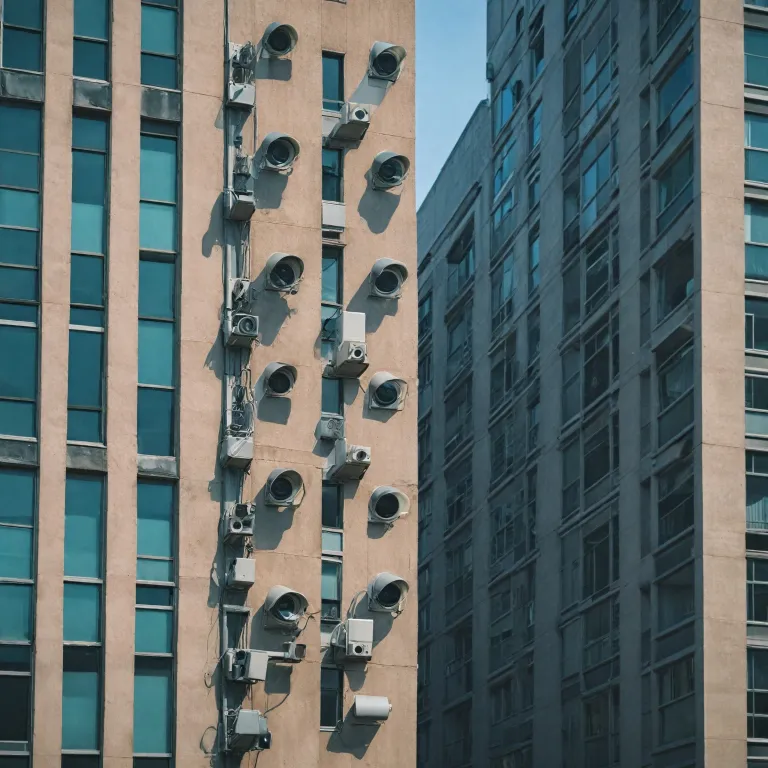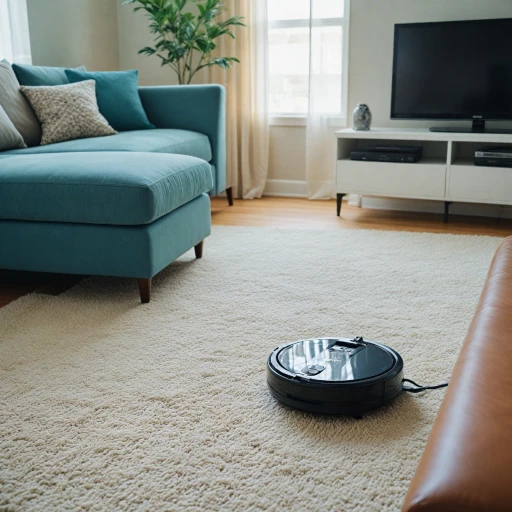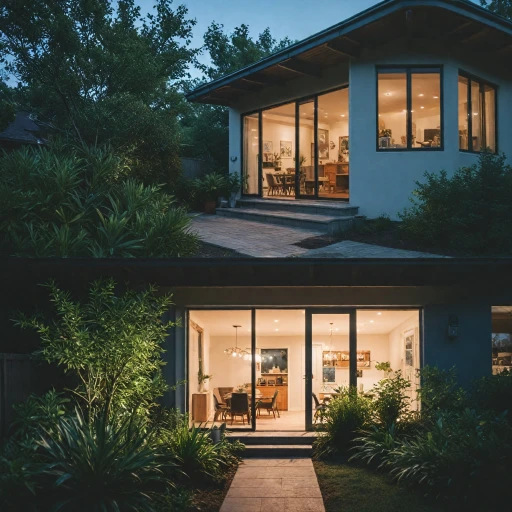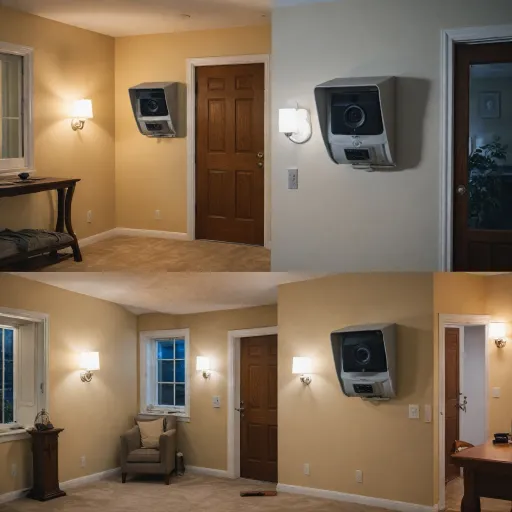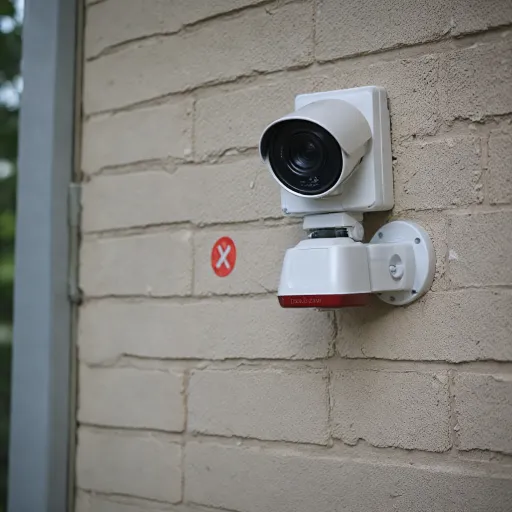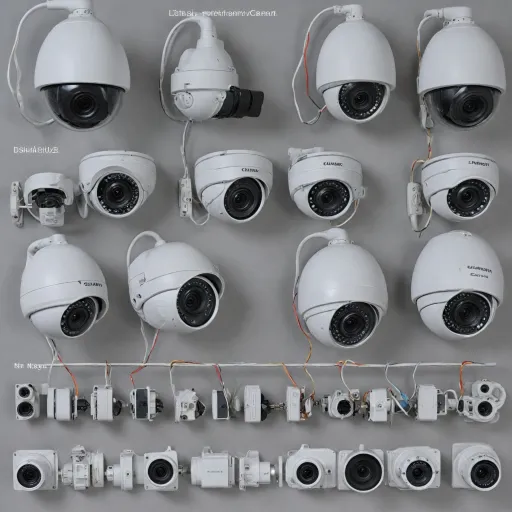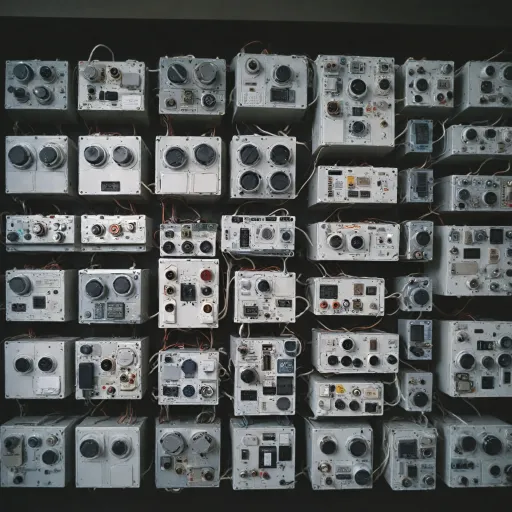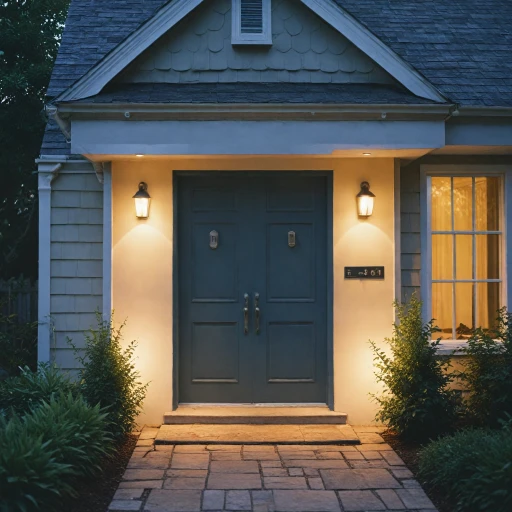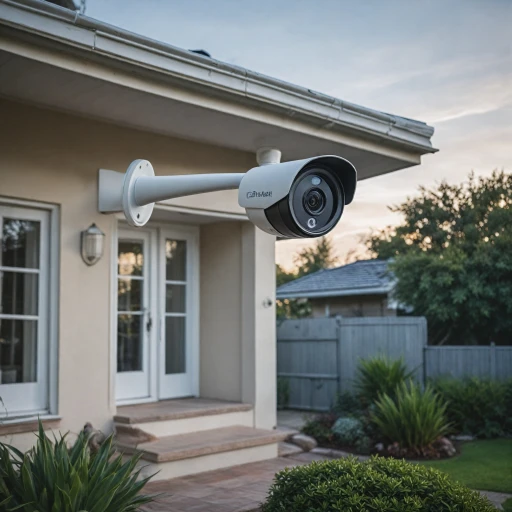
Understanding CCTV Systems
Decoding the Essentials of CCTV Technology
The world of home and business security has evolved significantly over the years, and at the forefront of this evolution are Closed Circuit Television (CCTV) systems. Unlike traditional surveillance methods, CCTV offers a more comprehensive and reliable solution for monitoring property and safeguarding against crime. These systems use security cameras to capture video footage, which is then transmitted to a set of monitors or recorded for future access, making them an essential component in enhancing home security with surveillance cameras.
Key Features of CCTV Cameras
CCTV cameras, often referred to as surveillance cameras, come in various shapes and sizes, each designed to meet specific security needs. From simple, fixed-lens cameras to more advanced options with facial recognition capabilities, the type of camera you choose will depend on the nature of surveillance required. For instance, businesses might opt for sophisticated video security solutions to monitor large premises, while smaller properties may benefit from basic systems that provide adequate monitoring without unnecessary complexities.
The Infrastructure of CCTV Systems
Behind every effective CCTV system lies a network of interconnected devices. These systems function through a series of cameras and monitors connected via wiring or wireless networks. Understanding the role of wiring in these systems is crucial, as it dictates the quality and reliability of the video surveillance. A robust cabling infrastructure can enhance the clarity and accessibility of the recorded footage, a topic we will delve into further when discussing installation and maintenance considerations.
Applications Beyond Security
While the primary purpose of CCTV systems is to enhance security, they also offer valuable insights into business operations, employee behavior, and customer interactions. By providing continual access to footage, these systems enable businesses to make informed decisions that can improve efficiency and customer service. Moreover, with advancements in technology, modern CCTV security systems can integrate seamlessly into existing digital infrastructures, providing a comprehensive and cohesive approach to property surveillance.
Benefits of CCTV in Buildings
Enhanced Surveillance Across the Premises
One of the most significant advantages of implementing CCTV cameras in buildings is the comprehensive surveillance they provide. These systems allow for constant monitoring of all areas within the property, effectively deterring criminal activities and ensuring a heightened level of security. With strategic placement, CCTV systems can capture video footage from multiple angles, covering essential entry points, communal spaces, and parking lots. This capability not only deters potential intruders but also provides valuable evidence if a crime occurs.
Real-Time Monitoring and Quick Response
CCTV systems are crucial for real-time monitoring and swift response times in maintaining building security. Security personnel can instantly access live footage, allowing them to assess situations quickly and respond effectively to any suspicious activities. Additionally, modern advancements in CCTV technology, such as facial recognition and motion detection, further enhance the responsiveness of security measures, providing more nuanced surveillance solutions.
Data Aggregation and Informed Decisions
The deployment of CCTV systems goes beyond simply capturing a video. Advanced systems are capable of aggregating data, allowing property managers to make informed decisions. By analyzing patterns in footage, businesses can optimize their security solutions, address vulnerabilities, and even improve overall operational efficiency. For instance, identifying high-traffic areas within a building or business offices can lead to better management decisions regarding staffing and security systems.
Explore more about enhancing property safety with CCTV systems in this detailed guide.
Choosing the Right CCTV System
Factors to Consider When Selecting CCTV for Your Building
When choosing the right CCTV system for your property, it’s essential to make informed decisions to ensure the security solutions meet your specific needs. With a variety of security cameras and surveillance systems available, taking the time to assess the specific types of CCTVs and their functionalities will significantly impact the effectiveness of your security system.- Type of Cameras and Video Resolution: The types of CCTV cameras are diverse, including dome cameras, bullet cameras, and PTZ (pan, tilt, zoom) cameras, each serving different monitoring purposes. Assessing the video resolution is crucial as higher resolution cameras provide clearer footage, which is invaluable for identifying suspicious activity or potential threats. Modern systems even offer options for troubleshooting connectivity issues to ensure uninterrupted access to video feeds.
- Field of View and Coverage: Evaluate the areas you want to monitor to determine the most suitable field of view for each camera. For larger properties or more precise monitoring, opt for cameras with wider angles or those that can provide 360-degree coverage, allowing comprehensive surveillance of the premises.
- Integration and Compatibility: A cohesive security system is fundamental for effective building security. Ensure that the CCTV system you choose can be integrated with existing security protocols, such as access control systems and alarm systems. This offers a seamless security solution that enhances safety measures for businesses or other building types.
- Storage and Data Management: Consider the capacity for data storage and management. With increased surveillance, having ample storage for video footage is important. Opt for systems that offer both local and cloud storage solutions to ensure easy access and retrieval of data whenever necessary.
- Advanced Features: Evaluate any additional features like facial recognition, motion detection, or night vision capabilities. These features can be particularly beneficial for businesses that require advanced monitoring solutions to mitigate crime and enhance property protection.
Installation Considerations
Ensuring Optimal Installation
The effectiveness of your CCTV system relies heavily on proper installation. A well-planned setup not only guarantees comprehensive coverage of your property but also enhances the reliability of video surveillance. Here are some key factors to consider when installing CCTV systems:
- Camera Placement: The positioning of cameras is crucial. Determine areas with high security priorities, such as entry points, hallways, and parking lots, to ensure thorough monitoring. Consider strategic placement to cover blind spots, maximizing the surveillance scope without compromising privacy.
- Type of Cameras: Depending on the required field of view and specific security needs, different types of CCTV cameras should be utilized. For instance, dome cameras offer wide angles, making them suitable for large spaces, while bullet cameras are optimal for long-distance surveillance.
- Infrastructure Requirements: Ensure that the building's infrastructure can support the CCTV system. This includes the availability of power outlets, network connectivity for IP cameras, and internet bandwidth for remote access.
- Lighting Conditions: Analyze the lighting conditions in areas where cameras will be deployed. For low-light environments, it's vital to consider security solutions such as infrared cameras or additional lighting to ensure clear video footage.
Wiring and Connectivity
The wiring and connectivity of the CCTV system significantly impact its performance and reliability:
- Cabling Needs: Select appropriate cabling solutions that match the system requirements, such as coaxial cables for analog cameras or Ethernet cables for IP cameras. Proper cable management not only ensures a seamless data flow but also reduces the risk of cable damage.
- Integration with Existing Security Systems: If there are existing security measures in place, it’s beneficial to integrate the new CCTV setup for holistic monitoring. This may involve connecting the surveillance cameras with alarm systems or other security devices.
Testing and Adjustment
Once installation is complete, testing and adjustment are imperative to make sure the system functions as intended:
- System Testing: Conduct comprehensive tests to ensure all cameras are operational and correctly positioned. This includes checking the feed on monitoring devices and ensuring video data is being recorded.
- Troubleshooting: Be prepared to troubleshoot common installation issues, such as connectivity problems or incorrect camera angles, to avoid security lapses.
- Regular Maintenance: To maintain efficiency and extend the lifespan of the system, schedule regular maintenance checks. Clean camera lenses, update software, and check for any potential damage to ensure ongoing optimal performance.
Privacy and Legal Considerations
Safeguarding Privacy and Adhering to Legal Standards
When deploying surveillance systems in any building, being mindful of privacy is crucial to avoid legal complications. Ensuring that your CCTV cameras are utilized in a way that respects privacy rights is essential.
Firstly, place security cameras strategically to maximize security without infringing on personal spaces. Avoid areas like bathrooms or any space where there might be an expectation of privacy. This strategy not only deters crime but also ensures that privacy is respected.
Understanding the legal landscape is critical before installing CCTV systems. Different countries, including the United States, have specific regulations governing video surveillance. Compliance with these laws is not just a legal obligation but also a demonstration of ethical business practices.
In many regions, it is mandatory for businesses to notify individuals that they are being recorded. This can be achieved by placing visible signs indicating that video security measures are in place. Such transparency helps build trust and reduces concerns regarding unauthorized monitoring.
Moreover, handling and accessing surveillance footage require proper security measures to protect data privacy. Limiting access to authorized personnel only and regularly auditing access logs can prevent misuse of recorded video data.
Finally, modern CCTV systems often come with advanced features such as facial recognition. While these can be effective security solutions, businesses must ensure compliance with any additional regulations or guidelines that apply to these types of surveillance technologies. This approach preserves the balance between security needs and personal privacy.
Maintaining and Upgrading CCTV Systems
Regular Maintenance for Optimal Performance
Ensuring your CCTV systems are functioning at their best requires regular maintenance. This involves checking the cameras, cables, and recording equipment to prevent any unexpected failures. Regularly cleaning the camera lenses and ensuring that all connections are secure can help maintain clear video footage. It's also important to verify that the system's software is up to date to protect against vulnerabilities.
Upgrading Your CCTV System
As technology evolves, upgrading your CCTV cameras and systems can enhance your security measures. Consider integrating advanced features such as facial recognition or higher resolution cameras to improve the quality of surveillance. Upgrading can also mean expanding your system to cover more areas of your property or business, providing comprehensive monitoring solutions.
Data Management and Storage Solutions
Efficient data management is crucial for any surveillance system. Ensure that your CCTV system has adequate storage capacity for video footage, and consider cloud-based solutions for easier access and management. Regularly reviewing and archiving important footage can help in maintaining an organized system and ensuring that critical data is not lost.
Security and Privacy Considerations
While maintaining and upgrading your CCTV systems, it's essential to consider privacy and legal aspects. Ensure that your surveillance practices comply with local regulations and respect the privacy of individuals. Implementing access controls and encrypting data can help protect against unauthorized access and ensure that your security solutions are both effective and responsible.

